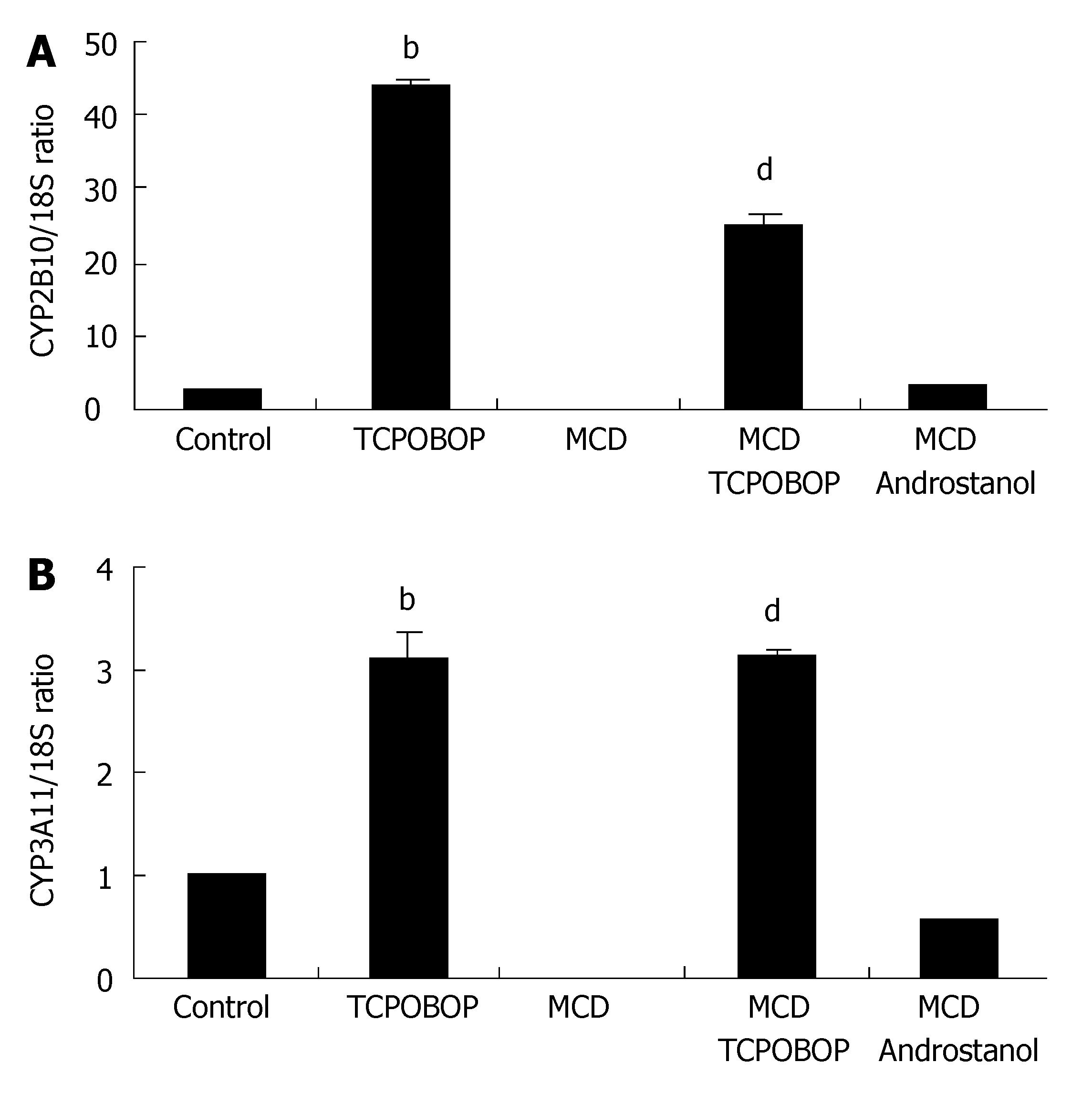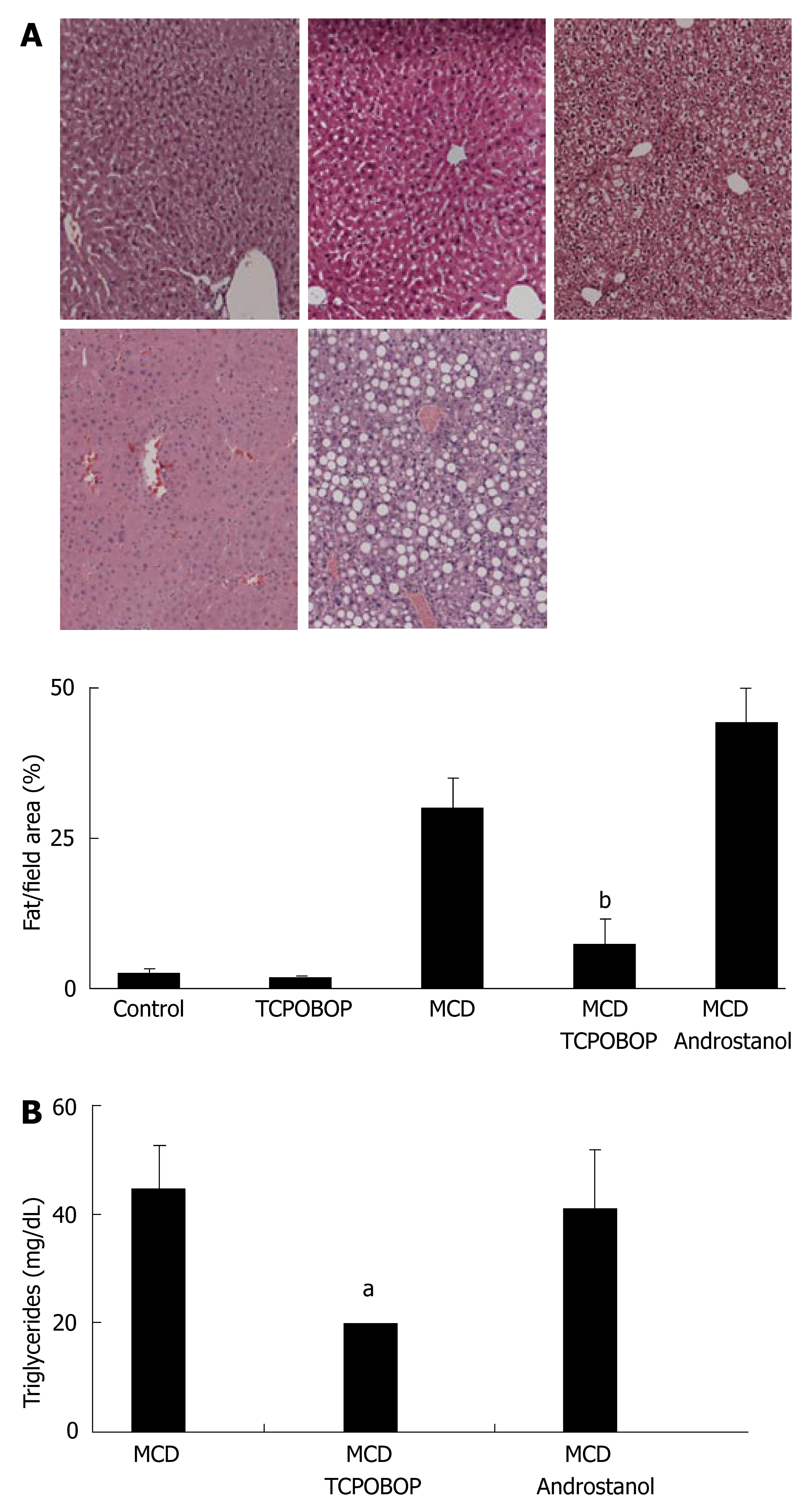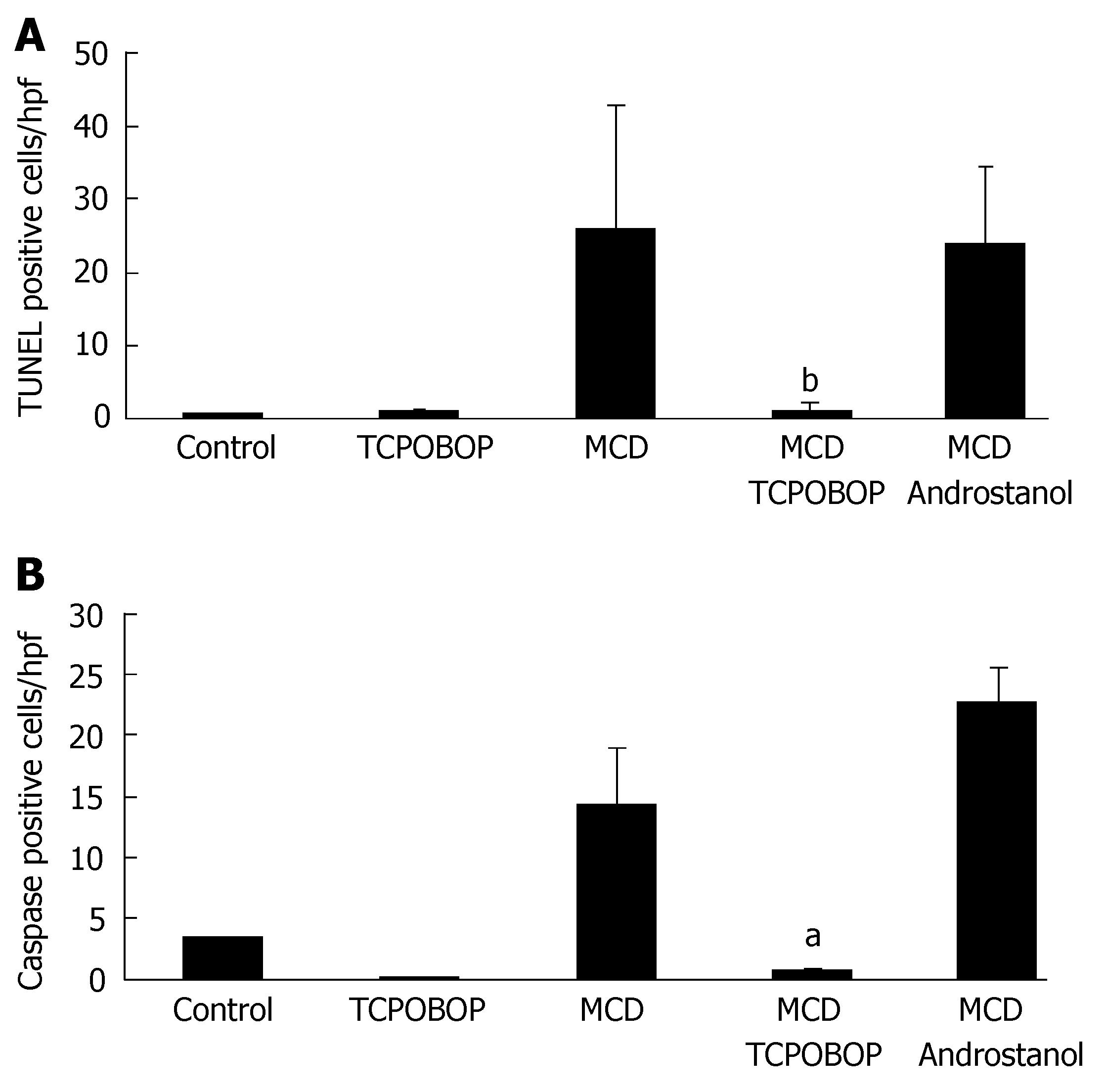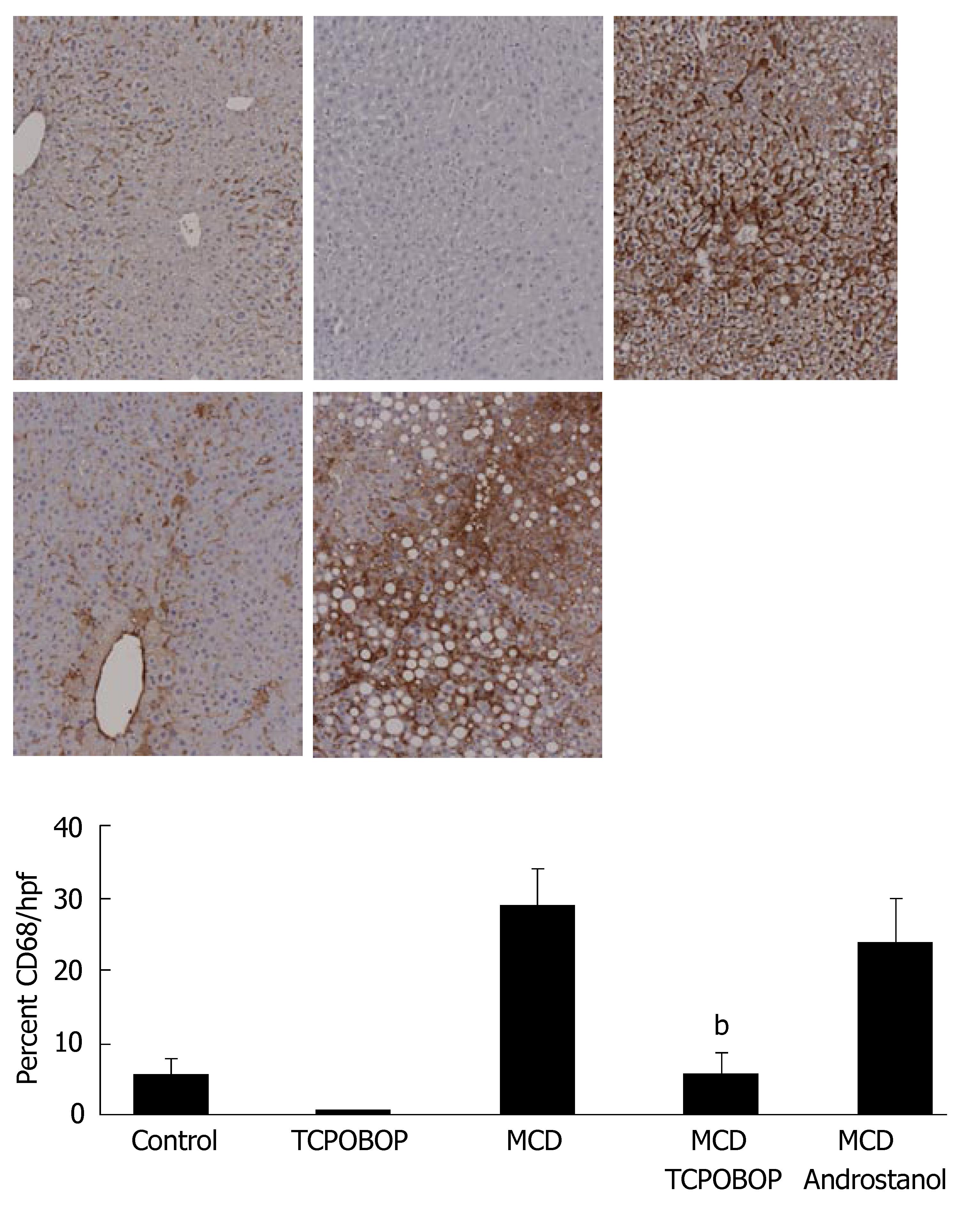Copyright
©2007 Baishideng Publishing Group Inc.
World J Gastroenterol. Nov 14, 2007; 13(42): 5635-5641
Published online Nov 14, 2007. doi: 10.3748/wjg.v13.i42.5635
Published online Nov 14, 2007. doi: 10.3748/wjg.v13.i42.5635
Figure 1 Over-expression of CAR target genes in MCD diet-fed mice treated with TCPOBOP.
CAR activation was assessed by measuring CYP2B10 and CYP3A11 (CAR target genes) expression in whole liver from vehicle-treated and TCPOBOP-treated chow-fed and MCD diet-fed mice. Expression was measured by real-time PCR and normalized as a ratio using 18S mRNA as housekeeping genes. A value of 1 for this ratio was arbitrarily assigned to the data obtained from vehicle-treated CAR+/+ mice. (A) CYP2B10 and (B) CYP3A11 mRNA expressions were increased in TCPOBOP-treated (3 mg/kg ip for 3 d) chow-fed mice (bP < 0.01 for CYP2B10 and CYP3A11 compared to control) and MCD diet-fed mice (dP < 0.01 for CYP2B10 and CYP3A11 compared to untreated). This phenomenon was abated by treatment with a CAR inhibitor androstanol (100 mg/kg ip) daily for 3 d at the starting of weeks one and two of the MCD diet (total of 6 injections), (n = 5 in each group).
Figure 2 Hepatic and serum fat content reduced by TCPOBOP treatment in the MCD diet-fed mice.
(A) Top panel, from left to right: Fixed liver specimens from vehicle-treated chow-fed mice, TCPOBOP-treated (3 mg/kg ip for 3 d) chow-fed mice, vehicle-treated (corn oil) MCD diet-fed diet mice for 2 wk, TCPOBOP-treated MCD diet-fed mice for 2 wk; CAR inhibitor, androstanol-treated MCD diet-fed mice for 2 wk were stained by conventional H&E. Lower panel: Quantitation of hepatic fat content by Oil red O staining. Note the marked reduction of hepatic fat in the TCPOBOP-treated MCD diet-fed mice (bP = 0.001); (B) Serum triglyceride levels from mice fed the MCD diet for 2 wk with either TCPOBOP or androstanol treatment. Treatment with TCPOBOP reduced serum triglyceride levels by half (aP = 0.03).
Figure 3 Hepatocyte apoptosis is attenuated by TCPOBOP in the MCD-diet fed animal.
(A and B) Fixed liver specimens were analyzed by TUNEL and immunofluorescence for active caspase 3/7 to identify apoptotic liver cells. The percent/field area of TUNEL- (bP = 0.01) and active caspase 3/7-positive cells (aP = 0.03) were significantly higher in vehicle-treated MCD diet-fed mice than TCPOBOP-treated (3 mg/kg ip for 3d) MCD diet-fed mice (n = 5 in each group).
Figure 4 Hepatic inflammation attenuated by TCPOBOP treatment in the MCD diet-fed mice.
Top panel: Representative photomicrographs of immunohistochemistry for CD68, a marker of Kupffer cells; Lower panel: The percentage of CD68-positive areas in the liver sections was quantitated using digital image analysis. Immunoreactivity for CD68 was significantly reduced in TCPOBOP-treated MCD diet-fed mice as compared with vehicle- and androstanol-treated mice (bP = 0.002) (n = 5 in each group).
- Citation: Baskin-Bey ES, Anan A, Isomoto H, Bronk SF, Gores GJ. Constitutive androstane receptor agonist, TCPOBOP, attenuates steatohepatitis in the methionine choline-deficient diet-fed mouse. World J Gastroenterol 2007; 13(42): 5635-5641
- URL: https://www.wjgnet.com/1007-9327/full/v13/i42/5635.htm
- DOI: https://dx.doi.org/10.3748/wjg.v13.i42.5635
















